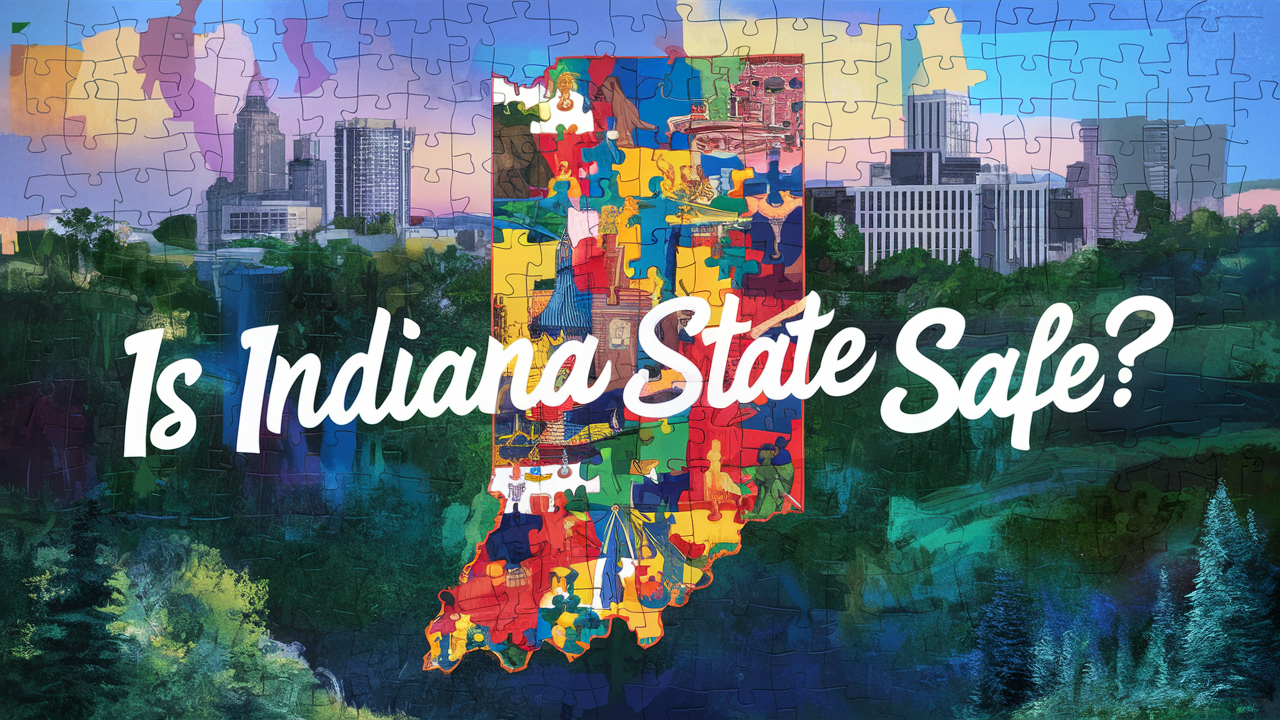Indiana is one of the Midwestern states in the US, and compared to many other states, Indiana is not very high on the list of dangerous states. However, just as at any place, some parts of Indiana are safer than others, while others are more dangerous in terms of crime and safety. Those who need to get insights into the current crime rates, weather conditions, health risks, and other factors influencing safety can easily get it by referring to the information on Indiana.
Crime Rates
The FBI’s most current uniform crime reports indicate that Indiana has a lower violent and property crime rate than the national average. There has been a relatively low count of violent crimes in Indiana with an incidence of 3.9 incidents per 1,000 inhabitants compared to the national incidence of 4.5 per 1,000. The property crime rate in Indiana is 23.7 per 1000, which is again less than the rate in the United States, which stands at 28.7 per 1000.
Based on these statewide numbers, Indiana has considerably lower probabilities for such crimes as murder, assault, burglaries, and theft as compared to numerous other states in this country. However, the crime rate is not fixed, and it changes significantly depending on the area. More often than not Indianapolis or Fort Wayne is known to register higher cases of violent or property crimes as compared to small towns or rural areas where crime rates are relatively negligible. The threats to personal public safety are major for residents in downtowns of large cities, whereas people in suburbs, small towns, or agricultural areas can experience only mild threats in this perspective.
Severe Weather Events
Indiana lacks some of the disasters such as coastal flooding, and hurricanes because it is an inland state in the Midwest region of the United States of America. However, it does experience a few severe thunderstorms and tornadoes during the spring and summer months that present risks to the public. There is an average of 19 tornadoes in Indiana every year, with the major ones rated either EF0 or EF1 and confined to the I-70 area, although more violent twisters are certainly not out of the question. According to the Hail Report, Indiana has 35 days with large hail annually, and it ranks high among states with hail danger. Tornadoes and other strong winds are also felt statewide throughout the warmer months accompanied by frequent thunderstorms and lightning.
Besides the tornado and thunderstorm threats, it snows moderately in Indiana during winter months, though it is not severely affected by blizzards as in some northern states. Thus, the heat is observed to be well controlled and does not pose the risk of heat waves and drought as it does in most of the southern central and western parts of the United States. The natural calamity hazards being faced by the state’s residents are not as frequent as those experienced by residents of Dixie Alley, Tornado Alley, or even any hurricane-affected coastal region. Some of the average climate and weather risks for individuals across the state can be managed through weather awareness, developing emergency plans, and acquiring sufficient property insurance.
Health Safety
According to the health promotion and disease prevention national rank, Indiana has a dismal performance and is ranked 41 out of 50. It has some of the highest smoking rates, poor nutritional intake, children obesity rates, and incidence and prevalence of chronic diseases such as diabetes and heart diseases. Indiana also experienced the outbreak of COVID-19; however, the vaccination rates in the long run were relatively better than the average. These factors act to reduce the total level of wellness and safety of the residents from emanating diseases.
However, patients in Indiana requiring hospitalization can easily access good quality hospitals with adequate emergency services and fairly affordable healthcare services. Environmental standards of air and water quality are also above the federal minimum requirements while some cities or agricultural sectors may from time to time experience pollution issues. Based on all the above findings, it can be concluded that those people enjoying better standards of health are subjected to fewer safety hazards in the Indiana region, by way of being prone to serious diseases. There is, therefore, the continuing presence of major public health issues in the areas of smoking, diets, and physical inactivity.
Conclusion
Examining the crime figures, climate risks, disease risks, and more, further establishes that Indiana offers decent safety for both the inhabitants and the visitors against many other states across the country. New York City has more violent crimes than in the entire nation while rural stations record almost zero violent crimes. Tornadoes are frequent but not many of them turn out to be major disasters apart from a couple of incidences in the history of the world. Indeed, the indexes of public health are still weak but quality health care is available for the diseases that exist.
The preventive measures and safety tips on personal protection, property protection, emergencies, and health care would make Indiana a safe place for the inhabitants to call it the Crossroads of America. Certainly, every country and state has its drawbacks and a certain level of risks, however, based on the previously mentioned statistics and historical data Indiana is one of the safer and more secure states in the U.S. to start a family and lead a happy life.


